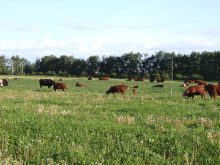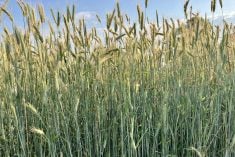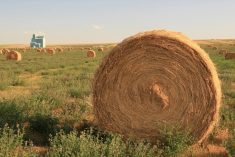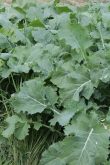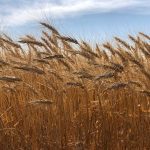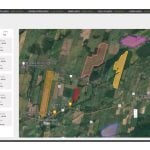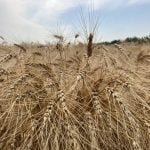At one of Manitoba Beef and Forage Initiative’s (MBFI) field days this summer, MBFI showed off a new trial — teff grass.
Initially grown in a plot trial at the Parkland Crop Diversification Foundation in 2020, MBFI decided to try the crop in a larger trial after seeing the success at the foundation.
“I would consider this more of a case study than a formal research trial,” says Mary-Jane Orr, the general manager of MBFI. “In this case, we just wanted to trial to see how well it would work and how well our equipment would work on a single field.”
Read Also

Why post-drought pasture management matters for beef farmers
Pasture management is always important, but it is especially important following a drought. During these challenging periods, pastures may suffer…
Teff grass is a fine, warm-season grass originating from northeast Africa. Although it is rarely grown in Canada, it’s becoming more common in areas of the United States, such as Kentucky and Oregon.

James Frey, an applied research specialist at Parkland Crop Diversification Foundation, says they started researching teff because of the high protein it offers and high palatability.
“This seems like something that would be a good fit if seeded a little bit later in the season, like after the last frost has come and gone,” Frey says. “Because it’s an annual, it wouldn’t necessarily be something where a farmer would need to think about putting it in a long-term rotation.”
The first trial of the grass in 2020 was unsuccessful because there was a frost after it germinated.
In 2021, despite the drought, the plot did well, and again in 2022. In 2022, they lowered the seeding rate to five pounds per acre, because they found no difference between seeding at five pounds and seven pounds. The teff seed cost $5 a pound. At five pounds per acre, they paid $25 per acre.
They take multiple cuts of the plot — usually at the end of July, and again in September. “So those two cuttings, we ended up taking a field test off of the first cut and the second cut to kind of get a sense of what the nutrients nutritional value of the grass is at that given time,” Frey says.
Overall, he says they noticed that on first cut, they had 1.5 bales per acre with 21 per cent protein. Second cut, they came away with 4.5 bales per acre with 13 per cent protein.

MBFI faced different issues than the Parkland Crop Diversification Foundation when they adopted teff to their farm.
Teff is a very small seed, making it hard to seed with the equipment MBFI currently uses. They had to use play sand to get the seed through the seeder.
Orr says that for them, having the right equipment, and targeting the right seeding rate, for early establishment was key.
Into the fall, Orr says they are planning to let it grow to maturity and graze it as a stockpile, rather than following Frey’s first-cut and second-cut method.
“For us, we were really interested more in seeing how it will kind of grow over the whole season and how well it is rooted — how well the quality is retained for stockpile grazing in the fall,” she says.
Both Frey and Orr are interested in seeing how the research regarding teff continues. At the Parkland Crop Diversification Foundation, they are planning to grow it in different locations in Manitoba to see how it reacts to the diverse weather the province receives.
At MBFI, Orr says she’s interested in seeing how teff might perform in an annual forage blend.
Frey says Teff might appeal to cattle producers because of the opportunity for annual rotation.
“It gives a lot of flexibility. Of course, that does come with the downside of needing to reseed every year if you want it to grow again. So that’s maybe a pro and a con. But the other thing I have noticed is, at least because of the way we’re managing it, and because of our growing climate, I have yet to find any volunteer tests in year two. So that’s an advantage because it’s so frost sensitive, it just kind of seems to get knocked out of the of the ground, if it experiences any frost, which, again, is also a bit of a danger.”





